Background
In the LED lighting market, AC-LED and DC-LED will be the most talked about. However, when the concept of HV LED emerged, in addition to Epistar, international manufacturers CREE, Nichia and Philips Lumileds also launched HV LEDs. So what are the unique charms of HV LED that make LED giants rush to produce? This article reveals the mystery of HV LED for everyone.
In recent years, due to the advancement of technology and efficiency, the application of LEDs has become wider and wider. With the upgrading of LED applications, the market’s demand for LEDs is also developing in the direction of higher power and higher brightness, also known as high-power LEDs.
Process Advantage
For the design of high-power LEDs, most major factories currently focus on large-size single low-voltage DC LEDs, and there are two approaches. One is a traditional horizontal structure, and the other is a vertical conductive structure.
As far as the first method is concerned, the manufacturing process is almost the same as that of general small-sized crystal grains. In other words, the cross-sectional structure of the two is the same, but it is different from the small-sized grains. High-power LEDs often need to be operated under large currents. A little unbalanced P and N electrode design will cause serious current crowding. As a result, in addition to making the LED chip unable to reach the brightness required by the design, the reliability of the chip will also be impaired.
Of course, for upstream chip manufacturers/chip makers, this approach has high process compatibility (Compatibility), and there is no need to purchase new or special machines. On the other hand, for downstream system factories, the peripheral collocation, such as power supply design, etc., is not much different. But as mentioned earlier, it is not easy to spread the current evenly on large-sized LEDs, the larger the size, the more difficult it is. At the same time, due to geometric effects, the light extraction efficiency of large-sized LEDs is often lower than that of smaller-sized LEDs.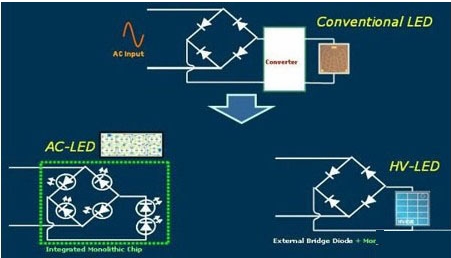
Advantages of vertical conductive structure
The second approach is much more complicated than the first. Since most of the current commercial blue LEDs grow on a sapphire substrate, to change to a vertical conductive structure, the non-conductive sapphire substrate must be removed after bonding to the conductive substrate before completing the subsequent manufacturing process. . As far as current distribution is concerned, since in the vertical structure, there is less need to consider the lateral conduction, the current uniformity is better than that of the traditional horizontal structure.
In addition, in terms of basic physical principles, substances with good electrical conductivity also have the characteristics of high thermal conductivity. By replacing the substrate, we also improved the heat dissipation and lowered the junction temperature. In this way, the luminous efficiency is indirectly improved. However, the biggest disadvantage of this approach is that due to the increased complexity of the manufacturing process, the yield rate is lower than that of the traditional level structure, and the manufacturing cost is much higher.
Comparison Between AC LED and DC High Voltage LED
1, AC LED
The driving voltage of the single crystal LED light-emitting chip is within 4V. No matter how high the driving voltage is, it can be connected in series to obtain a suitable driving voltage. This is an incomparable advantage of other light sources. CFL requires a complicated drive circuit, and LEDs can be connected in series to match the impedance matching of different voltages such as the mains. The length and diameter of the tungsten filament of the incandescent lamp determine the bulb resistance and impedance to meet different driving voltages.
The same applies to the different numbers of LEDs connected in series, although LEDs are not purely resistive loads. Today we are not discussing how to drive the LEDs most appropriately, and focus on analyzing the feasibility of AC and DC drives for the market.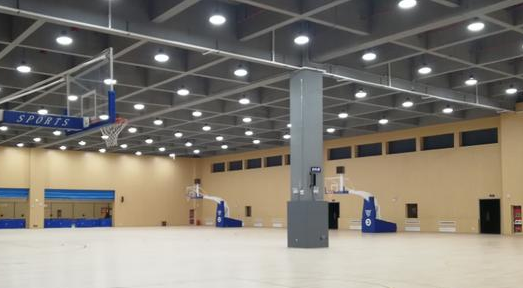
AC LEDs are made up of hundreds of single-die LEDs connected in series at the wafer level. It can be self-rectified and lighted under the AC high voltage of the mains, and then connected in series with a resistor or constant current source to keep it within a suitable driving power range.
Based on this design, LED lights have been used as early as the Christmas light string. Migrating to LED die packaging is a matter of recent years. In order to be compatible with the voltage standards of various countries, 4 parts are connected in series, so that half of the 220V value is exactly the 110V voltage, and the specifications are unified. AC LED is theoretically correct and feasible. The mains 50-60Hz single string LED works in two positive and negative half cycles respectively, no matter how you design it, it is generally the same.
LED requirements for current
LEDs are not resistive loads like incandescent lamps. Smaller voltage fluctuations will cause greater changes in LED brightness, making it easier to see flicker. AC LEDs have certain requirements for AC voltage stability, because the volt-ampere characteristics of LEDs are very steep, and a 10% voltage change will cause severe current fluctuations. For example, when the forward voltage changes from 3.3V to 3.6V, the current increases from 20mA to 34mA, an increase of 70%. A sharp increase in current is fatal to LEDs. The voltage drop will not damage the LED, but the fluctuation of the brightness will affect the customer experience.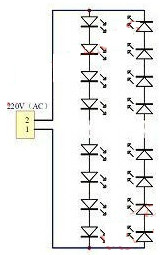
High-voltage LED string lights are driven by DC
As shown in the picture, the high-voltage LED string is driven by DC, so we will not analyze the specific driving details for the time being. AC is rectified by a bridge stack, and the LED utilization rate is increased by 50% at this time. The number and cost of LEDs have also been reduced by 50%. The rectifier bridge is cheap, and it is very uneconomical to integrate the rectifier bridge due to technological limitations. The rectifier bridge is small in size and easy to accept. It is not economical to design LED directly with AC.
2. DC High Voltage LED
LED multi-chip series packaging is the future trend. Careful consideration should be given to the number and method of cascading. It can be seen from the above analysis that the cost and lighting effect of designing AC LEDs are not appropriate. It cannot become the mainstream method, and it can even be said to have no practical application significance. The rectified DC LEDs form a strong competition to AC LEDs, so AC LEDs cannot be widely used. It is foreseeable that AC LED can only be a “game” in the future, and market rules determine that it will be out.
Since multi-chip serial connection is considered a trend, it must be a DC drive method. Multi-chip series connection requires LED wafer-level support. Excessive gold wire is an obstacle to the connection method and the production of light effects. Multi-chip packaging wafer-level series connection coupled with COB combination is the most optimized way.
Wafer-level serial connection is best within 10pcs, combined with COB gold wire connection. In this way, the COB mode multi-chipset dissipated heat dissipation will greatly reduce the requirements for the package substrate. The heat dissipation resistance is reduced, and the LED junction temperature is therefore reduced. At the same time, the yield rate of a large number of LED wafer-level series connections is improved.
Comparison of high-voltage LED and low-voltage LED (1)
Epistar is the first in the world to propose a high-voltage light-emitting diode (HV LED) as a high-power LED solution. Its basic structure is the same as AC LED, which is formed by dividing the chip area into multiple cells and connecting them in series. Its characteristic is that the chip can determine the number and size of its cells according to the requirements of different input voltages, which is equivalent to achieving customized services. Since it can be optimized for each cell, a better current distribution can be obtained, thereby improving the luminous efficiency.
There are three main technical differences between high-voltage light-emitting diodes and general low-voltage diodes.
The first is the trench (Trench). The purpose of the trench is to separate a plurality of unit cells. Therefore, an insulating substrate needs to be reached under the trench. The depth of the trench varies with different epitaxial structures, generally about 4-8um. There is no limit to the groove width. However, too wide trenches represent a reduction in the effective light-emitting area, which will affect the luminous efficiency performance of the HV LED. Therefore, it is necessary to develop a high aspect ratio process technology and reduce the process line width to increase the luminous efficiency.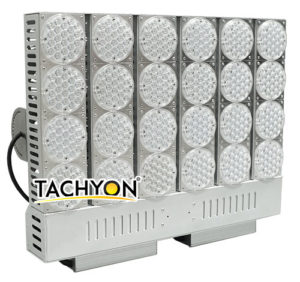
The second is the insulating layer (Isolation). If the insulating layer does not have good insulating properties, the entire design will fail. The difficulty lies in the need to coat a high-aspect-ratio trench with a film with good coating, compact film quality and good insulation. This is also the key to the single crystal AC LED manufacturing process.
Comparison of high-voltage LED and low-voltage LED (2)
The third is the interconnection wires between the chips (Interconnect). Generally speaking, to make a good connection, the wires need a relatively flat surface when they are bridged. A deep stepped structure will make the wire structure weak and prone to damage under high voltage and high current driving, causing chip failure. Therefore, the development of the planarization process becomes important. The ideal state is that when the insulating layer is made, the deep trenches can be flattened together, so that the interconnection wires can be connected smoothly.
In addition, the application of high-voltage light-emitting diodes is the most important difference from general low-voltage diodes. It can not only be used in Constant DC, as long as the bridge rectifier is connected externally, it can also be used in AC environments, which is very flexible.
In the high-voltage light-emitting diode, the external rectifier discards the AC LED and adopts the homogenous gallium nitride method and uses a silicon rectifier instead. This not only reduces energy consumption, but also prevents the impact of excessive reverse bias on the wafer.
Finally, because high-voltage light-emitting diodes have less internal bridge light-emitting areas than AC LEDs, the luminous efficiency is relatively high and the durability is better.
Compared with low-voltage LED, high-voltage LED has two obvious competitive advantages:
1. Low drive current
Under the same output power, the drive current required by the high-voltage LED is much lower than that of the low-voltage LED. Take Epistar’s high-voltage blue 1W LED as an example, its forward voltage drop is as high as 50V, that is, it can output 1W power with only 20mA drive current. The ordinary 1W LED with a forward voltage drop of 3V needs 350mA drive current to output 1W power. Therefore, high-voltage LEDs with the same output power dissipate much less power than low-voltage LEDs during operation, which means that the cost of heat-dissipating aluminum housings can be greatly reduced.
2. High conversion efficiency
High-voltage LEDs can greatly reduce the AC-DC conversion efficiency loss. Taking 10W output power as an example, if a 1W high-voltage LED with a forward voltage drop of 50V is used, the output terminal can be configured in 2 parallel 4 strings. The forward voltage drop of the 4 LEDs in series is 200V, which means that only the 220V alternating current (AC) from the mains needs to be bridge rectified and reduced by 20V.
But if we use 1W low-voltage LEDs with a forward voltage drop of 3V, even if 10 strings are connected together, the forward voltage drop is no more than 30V. In other words, it needs to step down from 220V AC mains power to 30V DC. We know that the lower the input and output pressure difference, the higher the conversion efficiency of AC to DC. It can be seen that if high-voltage LEDs are used, the efficiency of the transformer can be greatly improved, which can greatly reduce the power loss during AC-DC conversion. This reduction in heat consumption can further reduce the cost of the heat dissipation housing.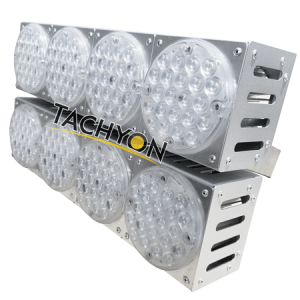
Therefore, if high-voltage LEDs are used to develop LED general lighting products, the overall power consumption can be greatly reduced, thereby greatly reducing the design requirements for the heat dissipation housing. For example, we can meet the heat dissipation requirements of LED lamps with thinner and lighter aluminum housings. Since the cost of the heat-dissipating aluminum housing is one of the main cost components of the LED lighting fixture, the effective reduction in the cost of the aluminum housing also means an effective reduction in the overall cost of the LED lighting fixture.
Conclusion
HV LED is not so much a new technology as it is a new concept. Unlike serial LED devices, multiple small chips are integrated from the chip link. Therefore, many advantages of HV LEDs are similar to the advantages of small chip integration compared to high-power chips. However, experts believe that it is precisely because of this concept of better application that it is advantageous for each company to reshape different HV LED products in combination with their own core technologies.
Many manufacturers believe that HV LEDs will be mainstream products in the future. The reporter believes that whether this judgment is the same as the PK of high-power and low-power integration, each has its own advantages and disadvantages and suitable applications. And in the final analysis, it also depends on the core technology of the enterprise itself. It is easier to choose which product to make the best use of it.




